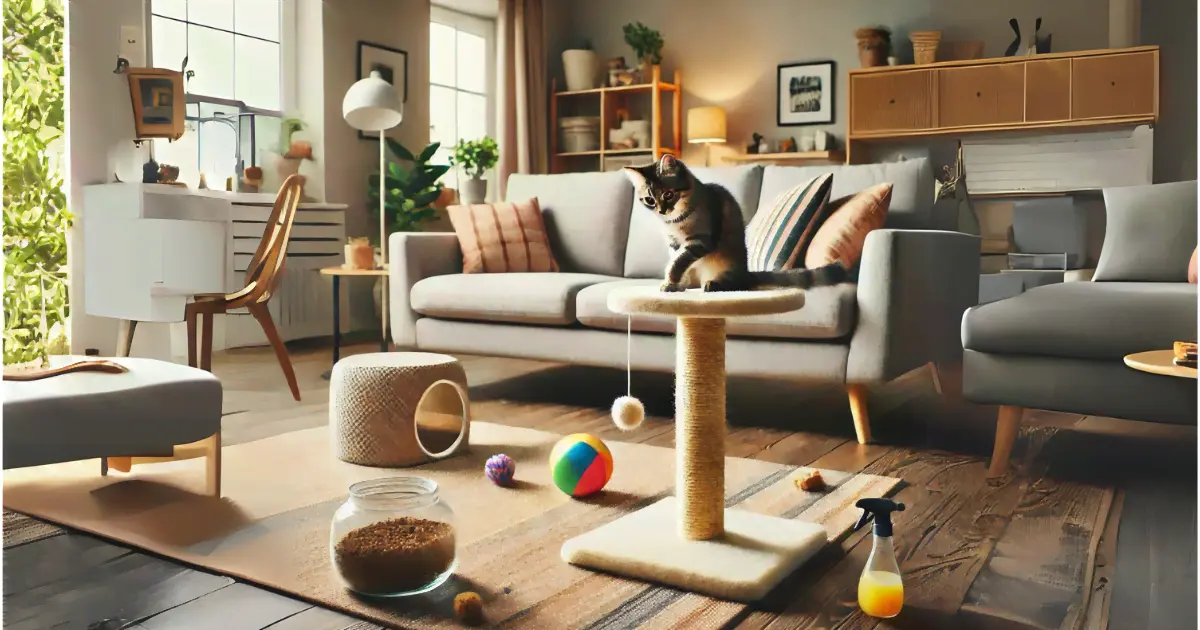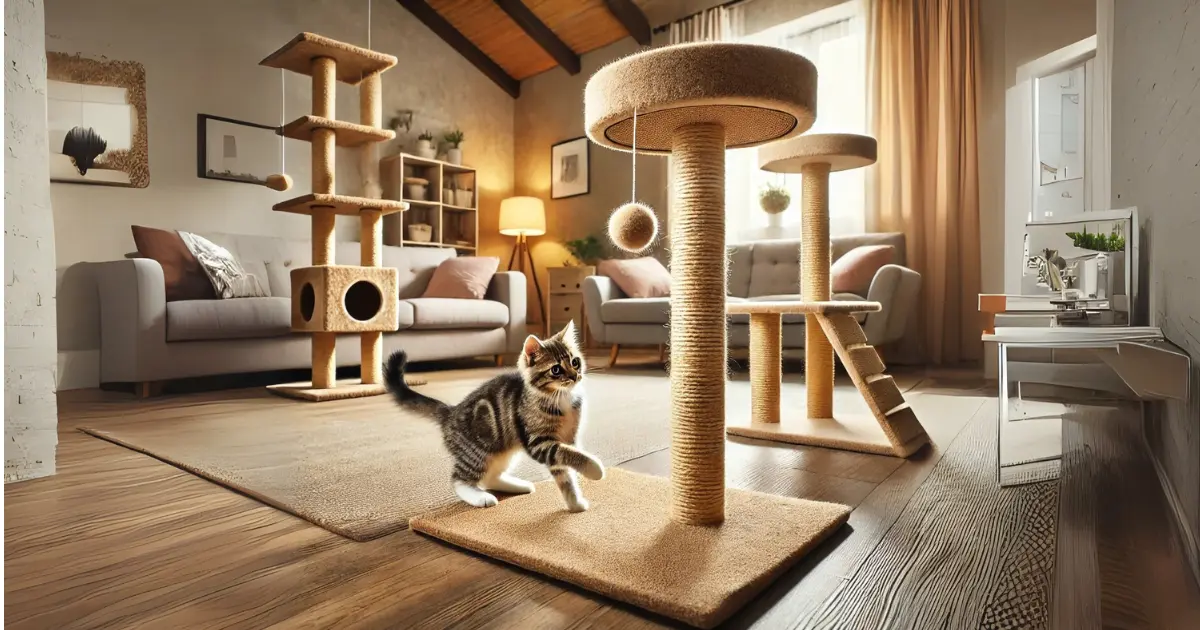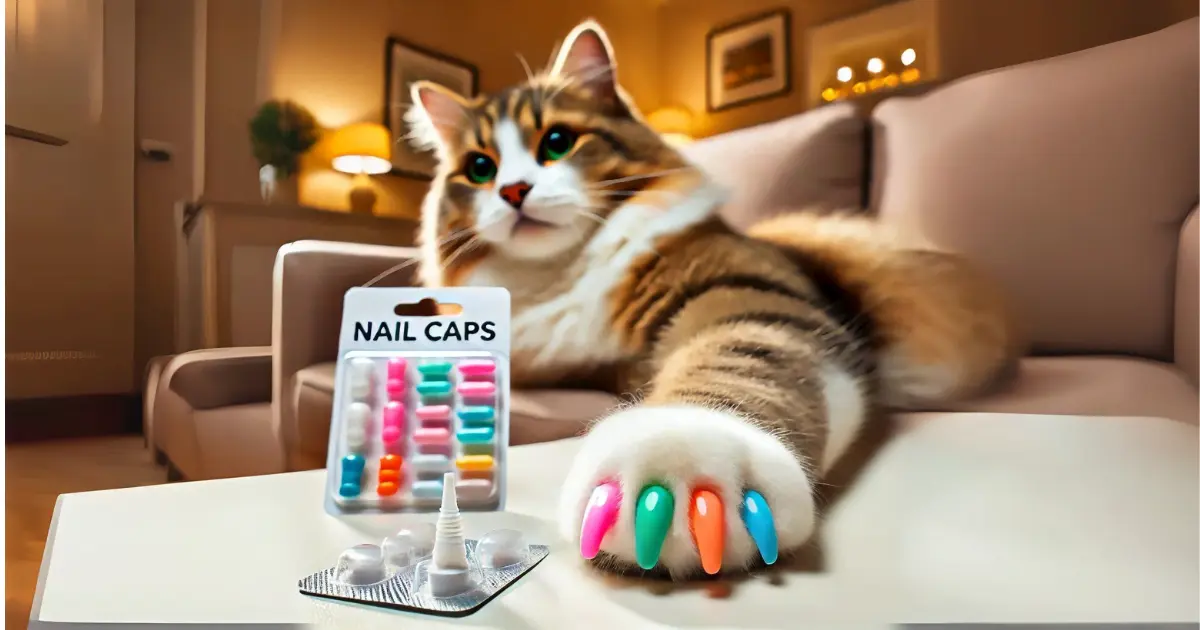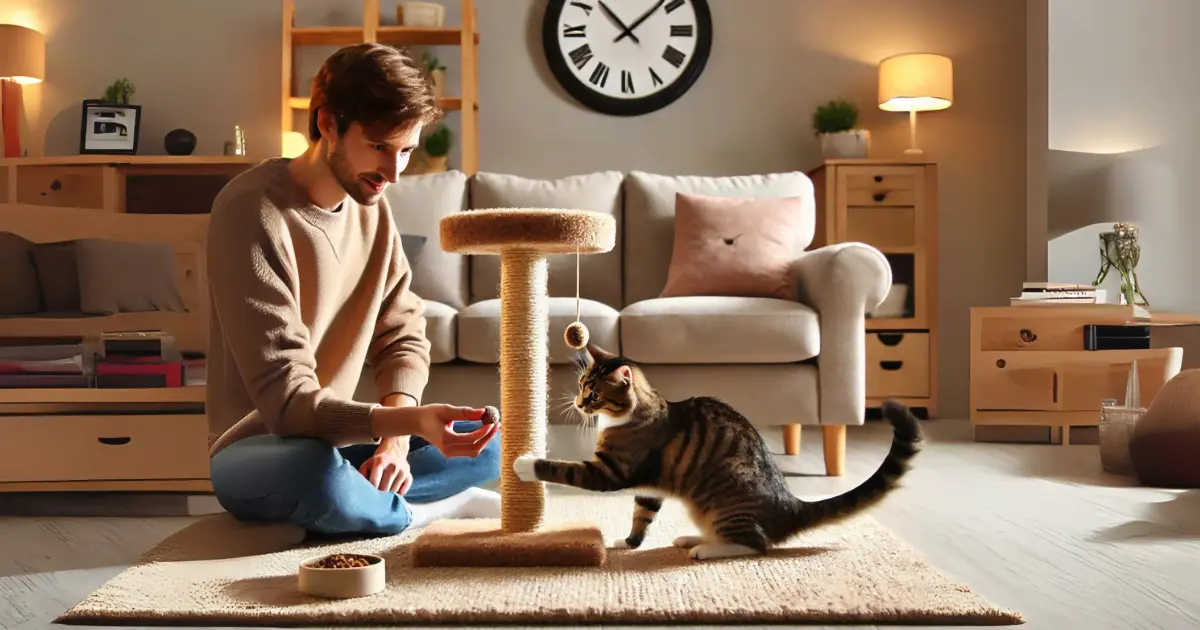How to Stop Cat Scratching Furniture Easily
Published: 19 Jan 2025
Cats are adorable, playful, and, well… sometimes a little destructive, especially when it comes to your furniture. Whether it’s your couch, leather chair, or even your gaming chair, if your cat’s claws are leaving their mark, don’t worry—you’re not alone. Scratching is totally normal cat behavior, but learning how to stop cat scratching furniture doesn’t have to be a struggle. Let’s go through some practical (and kind) ways to redirect this habit and keep everyone happy—your cat and your furniture included.

Table of Contents
Why Do Cats Scratch, Anyway?
First things first—scratching isn’t about your cat being “bad.” They’re not trying to ruin your favorite chair out of spite. Scratching is just something cats do. Here’s why
- Sharpening Claws: Scratching helps remove old claw sheaths and keeps their nails in top shape.
- Marking Territory: Cats have scent glands in their paws, so scratching is like leaving a “This is mine!” sign.
- Stretching and Stress Relief: Scratching feels suitable for cats, kind of like yoga does for us.
It’s not about being naughty—it’s just what cats do. But don’t worry; you can work with this natural behavior to save your furniture.
Scratching, much like kneading, is a natural and instinctive behavior for cats. If you’re curious about why cats knead, check out this guide to learn more about this fascinating habit.

1. Give Them Something Better to Scratch
If your cat is attacking your couch, it’s probably because they don’t have a better option. That’s where scratching posts and pads come in.
- Scratching Posts: Go for sturdy, tall posts covered in sisal. Cats love the texture.
- Cat Trees: Multi-level trees with built-in scratching areas keep cats entertained and off your furniture.
- Flat Scratching Pads: If your cat scratches carpets, flat pads are a great alternative.
Pro Tip: Don’t stick the scratching post in some random corner. Put it where your cat spends most of their time—like right next to the couch they’ve been scratching.
2. Make Your Furniture Less Appealing
Cats are smart, but they’re also practical. If your furniture isn’t fun to scratch, they’ll lose interest.
- Sticky Tape: Double-sided tape on furniture edges works wonders. Cats hate the sticky feeling.
- Furniture Guards: Clear plastic covers protect your fabric furniture or sofa while you’re teaching your cat new habits.
- Scents They Don’t Like: Cats dislike citrus, so a pet-safe spray with a lemon or orange scent can keep them away.
If you’re looking for safe and effective ways to deter your cat while keeping your home allergy-friendly, explore natural treatments for cat allergies that work well.
3. Reward the Good, Ignore the Bad
Here’s the thing—cats respond much better to positive reinforcement than punishment. Instead of scolding, focus on celebrating their wins.
- Treats and Toys: When your cat uses their scratching post, give them a treat or play with their favorite toy.
- Verbal Praise: Yes, cats do understand tone. A cheerful “Good job!” goes a long way.
Pro Tip: If you catch them scratching furniture, calmly redirect them to their post. Do not yell—it will only stress them out.
4. Trim Those Claws
Keeping your cat’s nails trimmed reduces scratching damage. You don’t have to cut much, just the sharp tips.
- Use Cat-Safe Nail Clippers: Be careful to avoid the pink quickly—it’s sensitive.
- Make It Routine: Start trimming when they’re calm, maybe after a nap or a meal.
If you’re nervous about trimming, your vet or groomer can help.

5. Use Nail Caps for Extra Protection
Soft nail caps, like Soft Paws, are little silicone covers for your cat’s claws. They’re safe, easy to use, and prevent damage without stopping your cat from scratching.
- Great for Persistent Scratchers: If your cat refuses to stop clawing furniture, these can save your sanity.
- Easy to Apply: You glue them on, and they fall off naturally as the nail grows.
6. Redirect Their Scratching Instincts
Cats don’t instinctively know where they should scratch—you have to teach them.
Start Where They Scratch: If your cat loves clawing the armrest, place a scratching post next to it—it’s like giving them a better option right where they want it.
Make It Fun: Grab their favorite toy or sprinkle some catnip on the post to spark their curiosity and encourage them to check it out.
Give It Time: Be patient—it might take a few attempts, but your cat will figure it out and start using the post. Just keep redirecting them gently!
7. Catnip to the Rescue
Speaking of catnip, it’s like magic for many cats. Sprinkle some on the scratching post to make it irresistible.
- If your cat isn’t into catnip, try silvervine or cat-attract sprays as alternatives.
Lucy’s Couch-Saving Story
Let me tell you about Lucy, a mischievous tabby who loved to scratch her owner’s new sofa. After a few frustrating weeks, her owner placed a sisal scratching post next to the couch and sprayed the couch with a citrus-scented deterrent. She also sprinkled catnip on the post and gave Lucy a treat every time she used it. Within a month, Lucy was scratching the post like a pro, and the couch was back to being a couch—not a scratching target.
8. Protect High-Risk Areas
If there’s a specific piece of furniture your cat won’t leave alone, you can take extra precautions:
- Furniture Covers: Slipcovers or blankets can minimize damage.
- Rearrange the Room: Move furniture away from walls or corners where scratching is familiar.

9. Stick With It and Stay Patient
Training your cat to stop scratching furniture won’t happen overnight, but don’t give up! Cats need time to adjust to new habits, and your continuous efforts will eventually pay off. Just keep at it—you’ve got this!
If you’re looking for a feline friend that requires less upkeep, consider a low-maintenance cat breed for easier care.
Wrapping It Up
Scratching doesn’t mean you have to give up on nice furniture whether it’s a leather couch, gaming chair, or even garden furniture. With the right tools, positive reinforcement, and a little patience, you can keep both your cat happy and your couch looking great.
“For more insights into feline scratching behavior, Purina’s cat behavior articles offer valuable information.”
What’s your experience with stopping unwanted scratching? Do you have any funny stories or tips to share? Drop them in the comments—we’d love to hear from you! 🐾
FAQ
1. Can I stop my cat from scratching furniture without buying a scratching post?
Yes, you can use DIY options like cardboard boxes, wooden planks, or old rugs to create scratching surfaces. However, dedicated scratching posts are usually more durable and appealing to cats.
2. Why does my cat scratch furniture even after using a scratching post?
Your cat might still scratch furniture if the post isn’t in the right location or lacks the texture they prefer. Try experimenting with different materials like sisal, carpet, or cardboard and place the post near their usual scratching spots.
3. Are there natural scents that can stop cats from scratching furniture?
Yes, cats dislike citrus scents like lemon and orange, which you can use as a natural deterrent. Always use pet-safe sprays to avoid irritation or harm.
4. Will soft nail caps stop my cat from climbing or hunting?
Nail caps don’t interfere with climbing or hunting instincts as they only cover the sharp tips of the claws. Your cat can still grip and play normally while protecting your furniture.
5. Can I prevent my cat from scratching furniture during stressful events?
Yes, provide stress-relief alternatives like calming sprays, toys, or extra scratching posts during stressful times. Scratching often increases with stress, so creating a safe and stimulating environment helps reduce this behavior.
6. How do I know if my cat likes a scratching post?
Cats show their preference by frequently using the post and engaging with it enthusiastically. If your cat ignores it, try applying catnip or placing it in their favorite areas to make it more appealing.
7. Is it possible to train multiple cats to stop scratching furniture at once?
Yes, but it requires separate scratching options for each cat to avoid competition. Place multiple scratching posts or pads around your home to meet the needs of all your cats.

- Be Respectful
- Stay Relevant
- Stay Positive
- True Feedback
- Encourage Discussion
- Avoid Spamming
- No Fake News
- Don't Copy-Paste
- No Personal Attacks



- Be Respectful
- Stay Relevant
- Stay Positive
- True Feedback
- Encourage Discussion
- Avoid Spamming
- No Fake News
- Don't Copy-Paste
- No Personal Attacks





